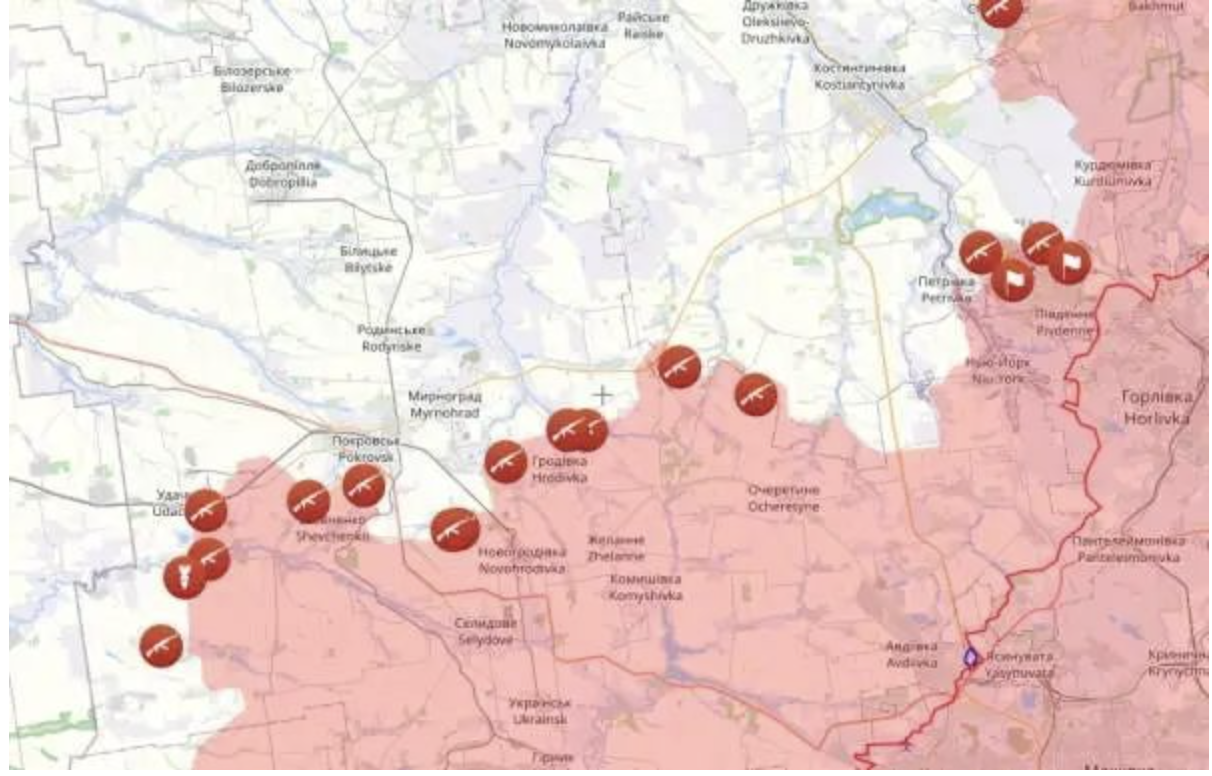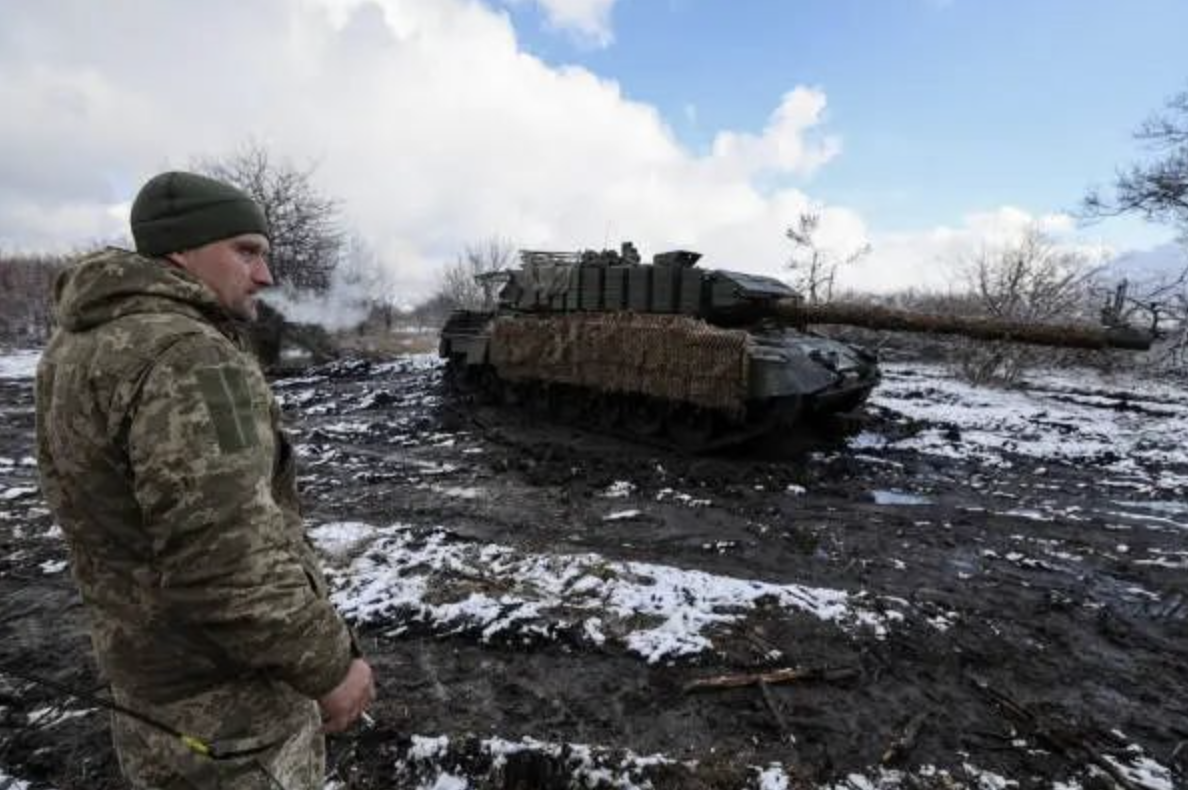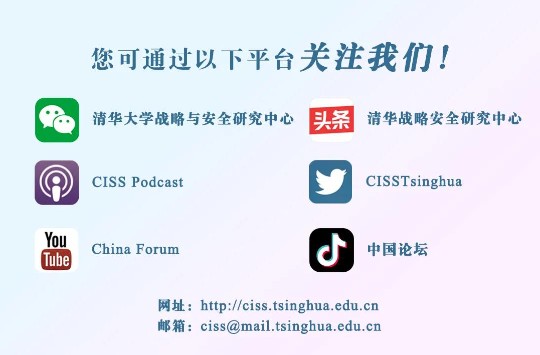编者按
乌克兰危机不仅是地区性问题,更是关乎全球安全与稳定的重大挑战。如何在复杂多变的国际局势中找到和平的突破口,需要智慧与国际社会的共同努力。1月31日,清华大学战略与安全研究中心研究专员、中国论坛特约专家周波于《南华早报》撰文,从特朗普希望中国帮助入手,探讨了俄乌冲突停火的主要问题,建议中美引领,与其他大国共同提供集体安全保障。
中国论坛特此转发中英文版,以飨读者。
2023年,我在《金融时报》发文时写到,即便中国与乌克兰危机毫无关联,但随着冲突的持续,越来越多的人会期盼中国成为斡旋者。我当时没有料到特朗普会再度当选美国总统,并向中国寻求帮助。
在达沃斯世界经济论坛上,特朗普透露已与习近平主席通电话,并表示中国在这一局势中“拥有很大影响力”。
一个曾誓言“要在24小时内结束战争”的人,现在要求中国介入斡旋,这真有点黑色幽默。其实,特朗普甚至无需开口。在俄罗斯发起特别军事行动一年之际,中国便提出了十二点和平方案。
去年,中国与巴西共同发起成立了“乌克兰危机和平之友小组”,该小组还包括其他几个国家。当然,这些努力尚未取得成功。乌克兰总统泽连斯基甚至称中国-巴西和平倡议“具有破坏性”。中国难以独自发挥作用。当俄乌双方均认为必须继续战斗时,任何外部倡议都不可能奏效。俄罗斯总统普京希望收复库尔斯克并完全控制乌克兰四个地区,而泽连斯基则一心加入北约,即便失去部分领土也在所不惜。

截至北京时间2月8日,俄军已经攻占捷尔任斯克,并正在推进围困红军城 Liveuamap
中美能否携手结束俄乌冲突?答案是肯定的。为此,两国应在一项由大国提供集体安全保障的计划中发挥引领作用。
集体安全保障在乌克兰人的记忆中刻骨铭心。20世纪90年代,美国、俄罗斯、英国和法国等拥核国家向乌克兰提供了此类保证,以换取基辅将苏联时期的核武器归还俄罗斯。2013年,中国承诺不对乌克兰使用核武器,并在乌克兰受到核武器侵略或侵略威胁时提供安全保障。
如今,面对世界上最大的拥核国家,乌克兰担心的是,任何形式的停火都可能难以持久。2022年3月,泽连斯基表示,乌克兰必须与所有邻国达成集体安全协议,并需世界主要大国参与。
俄罗斯同样需要集体安全保障。俄罗斯显然不愿在西方对乌克兰的安全防御面前显得孤立无援。去年在符拉迪沃斯托克举行的东方经济论坛上,普京将巴西、中国和印度描述为可在俄罗斯与乌克兰谈判中充当调解人的可靠伙伴。普京还多次感谢中国在冲突中秉持的“平衡立场”。
特朗普自诩为交易高手。然而,在美俄之间的任何交易中,普京最终握有王牌。俄罗斯在武器装备和兵力数量上均超过乌克兰,在战场上占据上风。
不过,特朗普确实拥有独特优势。作为向乌克兰提供最多武器的国家的总统,他可以对双方施加影响。如果俄罗斯不满足他的条件,他可以向乌克兰提供更多武器以继续战斗。如果乌克兰不同意达成协议,他可以减少,甚至威胁停止军事援助。
特朗普呼吁立即停火,随后进行谈判,这是本末倒置,因为若无谈判,几乎不可能达成停火协议。更糟糕的是,一旦谈判失败,战争可能再次爆发。
那么,哪些条件能够确保停火,协议的条款又将是什么?此外,如果如普遍预期的那样,停火后达成停战协议,分界线将划在哪里?
在这场胶着的僵局中,这些问题目前尚无明确答案。对乌克兰而言,按照当前战况停火意味着失去近20%的领土,数万士兵和平民白白丧生,而且仍无法加入被该国领导层视为唯一可靠安全保障的军事联盟——北约。与此同时,俄罗斯不仅担心可能失去已吞并的乌克兰四个地区,还担心失去库尔斯克——毫无争议的俄罗斯领土。因此,任何解决方案都必然依赖大国的调解以及集体安全保障的承诺。

顿涅茨克前线的一名乌军士兵和一辆改装后的豹一坦克 路透社
另一种可能是维和倡议。法国总统马克龙在与波兰总理图斯克、英国首相斯塔默的对话中,提议由北约国家的部队组成一支欧洲维和军团,以确保莫斯科遵守潜在的停火协议。泽连斯基在达沃斯呼吁欧洲派遣至少20万名士兵进行维和。
这是徒劳无益的空想。俄罗斯几乎肯定会将此视为北约在乌克兰存在的表现。北约东扩至乌克兰不正是普京发动这场冲突的公开理由之一吗?如果需要维和行动,最好从非欧洲的中立国家挑选部队。
目前,联合国在全球部署的维和行动仅有11项,而特朗普首次任期初期则有16项。因此,全球维和的人力绰绰有余。在这方面,作为联合国安理会五个常任理事国中出兵最多的国家之一,中国等国将更易被各方接受。
在战争的迷雾中,我们只知美国前国防部长拉姆斯菲尔德所说的“已知的未知”,即我们知道存在一些我们不了解的事情。无人知晓这场战争将持续多久,但一位奉行单边主义的美国总统如今意识到需要寻求帮助,这总归是件好事。
以下为英文原文:
When I wrote in the Financial Times in 2023 that even though China has nothing to do with the Ukraine war, the longer it drags on, the more people will look to Beijing as a broker, I never expected Donald Trump to be re-elected as US president and ask China for help.
At the World Economic Forum in Davos, Trump said he had reached out to President Xi Jinping during a phone call and described China as having “a great deal of power over that situation”.
There is a grain of black humour when the man who vowed to end the war within 24 hours asks China to step in. However, Trump didn’t even need to ask. A year after Russia invaded, China proposed a 12-point peace plan.
Last year, Beijing in collaboration with Brazil also launched the Group of Friends for Peace on the Ukraine Crisis, which includes several other nations. However, these efforts haven’t been successful. Ukrainian President Volodymyr Zelensky even called the China-Brazil peace initiative “destructive”.
Beijing cannot help single-handedly. At a time when Moscow and Kyiv believe they must keep fighting, no outside proposals will work. Russian President Vladimir Putin wants to take back Kursk and have full control of four Ukrainian regions while Zelensky is bent on joining Nato even at the cost of losing some territory.
Can China and the US work together to end the war in Ukraine? The answer is yes. To do so, they should take the lead on a plan where major powers offer a collective security guarantee.
A collective security guarantee is indelible in the memory of Ukrainians. In the 1990s, states with nuclear weapons – the US, Russia, Britain and France – provided such an assurance to Ukraine in exchange for Kyiv returning Soviet-era nuclear weapons to Russia. And, in 2013, China pledged not to use nuclear weapons against Ukraine and to provide security assurances in the event of aggression, or the threat of aggression, against Ukraine using nuclear weapons.
Now, facing the largest nuclear power in the world, Ukraine fears that any ceasefire may not be durable. In March 2022, Zelensky said Ukraine must have a collective security agreement with all its neighbours and the participation of the world’s leading powers.
Russia also needs a collective security guarantee. It most certainly doesn’t want to look isolated vis-a-vis a Western security defence of Ukraine. At the Eastern Economic Forum in Vladivostok last year, Putin described Brazil, China and India as trusted partners who could act as intermediaries in possible negotiations with Ukraine. Putin has also repeatedly thanked China for its “balanced position” on the conflict.
Trump is a self-proclaimed deal maker. However, in any deal between the US and Russia, Putin ultimately holds the trump card. Russia outguns and outnumbers Ukraine. It arguably has the upper hand on the battlefield.
However, Trump does have a unique advantage. As president of the country sending the most weapons to Ukraine, he can use his leverage on both parties. If Russia doesn’t meet his conditions, he can provide more weapons to Ukraine to keep fighting. If Ukraine doesn’t agree to a deal, he can reduce or even threaten to stop military aid.
Trump has called for an immediate ceasefire followed by negotiations. This is putting the cart before the horse since a ceasefire is seldom, if ever, agreed on without negotiations. Worse still, when negotiations fail, war might break out again.
What conditions could guarantee a ceasefire and what would be the terms of the agreement? Furthermore, if an armistice came after a ceasefire, as widely anticipated, where would the demarcation lines lie?
Amid a grinding stalemate, there are no clear answers to these questions yet. For Ukraine, a ceasefire along the current lines of combat would mean losing nearly 20 per cent of its territory and tens of thousands of soldiers and civilians, only to be kept outside Nato, a military alliance perceived by the country’s leadership as the only trustworthy security guarantee.
Meanwhile, Russia fears not only potentially losing four annexed Ukrainian regions, but also Kursk, an indisputable part of Russian territory. However, any solution invariably relies on the mediation of major powers and the promise of collective security guarantees.
Another prospect would be a peacekeeping initiative. In dialogue with Polish Prime Minister Donald Tusk and UK Prime Minister Keir Starmer, French President Emmanuel Macron proposed a European peacekeeping mission composed of troops from Nato countries to ensure Moscow adheres to a potential ceasefire. Most recently, in Davos, Zelensky called for Europe to send at least 200,000 soldiers as peacekeepers.
This is a fool’s errand. Russia will most certainly take this to be a manifestation of Nato’s presence in Ukraine. Isn’t Nato’s expansion into Ukraine one of the stated reasons Putin gave for launching the war? If a peacekeeping mission is needed, it would be best to select troops from countries that are neutral, rather than from European countries.
There are now only 11 UN peacekeeping missions deployed around the world compared with 16 during the early days of Trump’s first term. So there is more than enough manpower for global peacekeeping. In this regard, countries such as China – the largest contributor of troops among the five permanent UN Security Council members – would be more acceptable.
In the fog of war, we only know what late US secretary of defence Donald Rumsfeld described as a “known unknown”, which means we know something exists that we don’t know. No one knows how long this war will last but it is good that a unilateralist American president knows now that he needs help.
本文中文版2025年2月9日首发于“观察者网”

